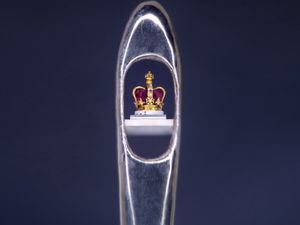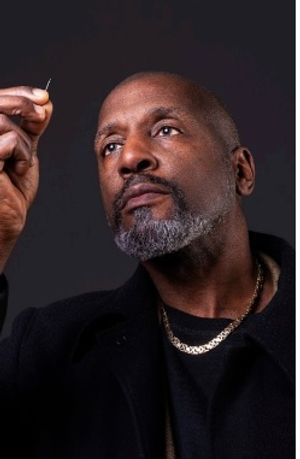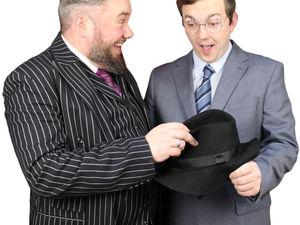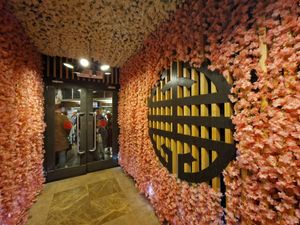Wolverhampton micro artist Willard Wigan creates tiny crown for coronation
World renowned Wolverhampton micro artist Dr Willard Wigan MBE has created a tiny crown to mark the coronation.

The microscopic masterpiece replica crown, from the Guinness World Record holder, is mounted within the eye of a tiny sewing needle and is not much bigger than the full stop of a standard newspaper.
The sculpture took Willard over six hundred hours to make during a seven-week period of twelve to sixteen hour sessions per day.
Working through the night and early mornings, when there is less vibration and air disturbance to add to the almost impossible challenge, Willard slows his breathing and heart rate, working between breaths and beats, using tiny tools, handmade specifically for this crown project.

The tribute is made entirely by hand, with a 24 carat gold frame woven around a carved grain of sand.
The artist said: "It drove me mad to make this. When my work is finished, it doesn’t belong to me anymore. This crown is for people to see, it’s one of the hardest and most detailed sculptures I’ve ever undertaken to date.”
Encrusted with real jewels and painted using his own eyelash as a paintbrush, the crown was mounted upon a carved nylon plinth and inserted into the tiny eye of a needle.
Willard is no stranger to Buckingham Palace, receiving his MBE from Prince Charles and gifting the Queen a tiny replica of her own coronation crown. The Queen later wrote to Willard to thank him, commenting, she had never been given something so small, that had meant so much.
Willard intends to exhibit the crown, rather than give it to King Charles, preferring it to be a “gift” for everyday people to enjoy rather than hidden in a private collection. He may add the crown to his current exhibition at Wollaton Hall, Nottingham.
Later this year Willard will launch The Wigan Foundation, a not for profit community interest company, changing perceptions of neurodiverse conditions like autism and dyslexia.





